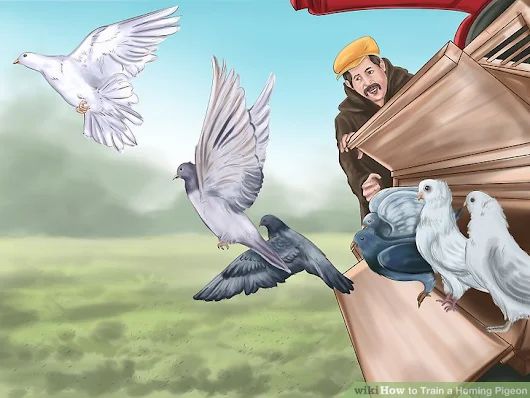WW2 regulations
Homing pigeon regulations
24:52 ""The possession of homing or racing pigeons is forbidden except under permit, and rules are made for the protection of such pigeons.""
http://pastdaily.com/wp-content/uploads/2015/08/News-for-August-28-1939.mp3
"Everything, it seemed was either banned, restricted or rationed. Even the raising of Homing Pigeons was banned, out of fear they would carry messages between enemy agents. Clothing and food were severely rationed, with priorities given to the Military."
http://pastdaily.com/2015/08/28/eyeing-pigeons-with-suspicion-august-28-1939/
BUT
"During World War II, the United Kingdom used about 250,000 homing pigeons. The Dickin Medal, the highest possible decoration for valor given to animals, was awarded to 32 pigeons, including the United States Army Pigeon Service's G.I. Joe and the Irish pigeon Paddy.
The UK maintained the Air Ministry Pigeon Section during World War II and for a while thereafter. A Pigeon Policy Committee made decisions about the uses of pigeons in military contexts. The head of the section, Lea Rayner, reported in 1945 that pigeons could be trained to deliver small explosives or bioweapons to precise targets. The ideas were not taken up by the committee, and in 1948 the UK military stated that pigeons were of no further use. However, the UK security service MI5 was still concerned about the use of pigeons by enemy forces. Until 1950, they arranged for 100 birds to be maintained by a civilian pigeon fancier in order to prepare countermeasures. The Swiss army disbanded its Pigeon section in 1996."
https://en.wikipedia.org/wiki/War_pigeon .
AND
http://www.arcre.com/archive/pigeons .
Start at 6 weeks old. Incentive to return. Increase the training distance by 5 miles per week.
https://www.wikihow.com/Train-a-Homing-Pigeon .
http://animals.mom.me/train-homing-pigeon-carry-message-10844.html .
https://www.wikihow.com/Train-a-Homing-Pigeon .
http://animals.mom.me/train-homing-pigeon-carry-message-10844.html .
Each pair of pigeons should have approximately 8-10 cubic feet of space inside the loft - so the space you have available for a loft might also dictate the maximum number of pigeons you can have.
Adding new pigeons to your collection -- keep them separated from your existing pigeons for a couple of weeks.
The training schedule should allow for training to occur at least once a day, and either the method or distance being worked on should change once a week. For example: everyday during week 1 practice going in and out of the trap door with the pigeon; everyday during week 2 practice returning to the loft from 1 mile away; etc.
Start by taking your pigeons 1 mile from home and releasing them. Do this several times a week.
Use a cage or a basket to carry your pigeons to the release location.
Each week go further away from home to release your pigeons, and go in different directions each time.
Don’t expand the distance too far, too fast. If your pigeons have any trouble, stop increasing the distance and continue training them at the last distance they were successful.
Create a second “home” for your pigeons. Train them to fly between two loft locations. Feed your pigeons at both lofts periodically, to give them incentive to want to return to each loft. If they’re at one loft and are hungry, they’ll fly to the other loft to look for food.
Adding new pigeons to your collection -- keep them separated from your existing pigeons for a couple of weeks.
The training schedule should allow for training to occur at least once a day, and either the method or distance being worked on should change once a week. For example: everyday during week 1 practice going in and out of the trap door with the pigeon; everyday during week 2 practice returning to the loft from 1 mile away; etc.
Start by taking your pigeons 1 mile from home and releasing them. Do this several times a week.
Use a cage or a basket to carry your pigeons to the release location.
Each week go further away from home to release your pigeons, and go in different directions each time.
Don’t expand the distance too far, too fast. If your pigeons have any trouble, stop increasing the distance and continue training them at the last distance they were successful.
Create a second “home” for your pigeons. Train them to fly between two loft locations. Feed your pigeons at both lofts periodically, to give them incentive to want to return to each loft. If they’re at one loft and are hungry, they’ll fly to the other loft to look for food.



No comments:
Post a Comment
Note: Only a member of this blog may post a comment.